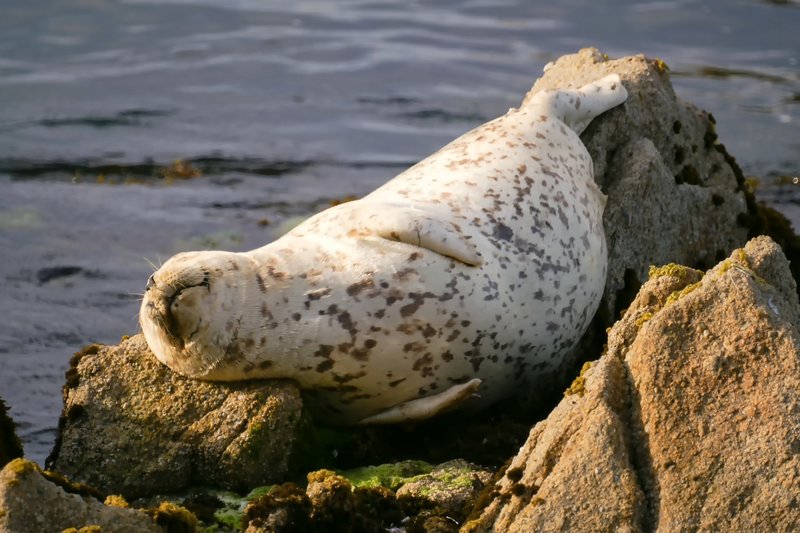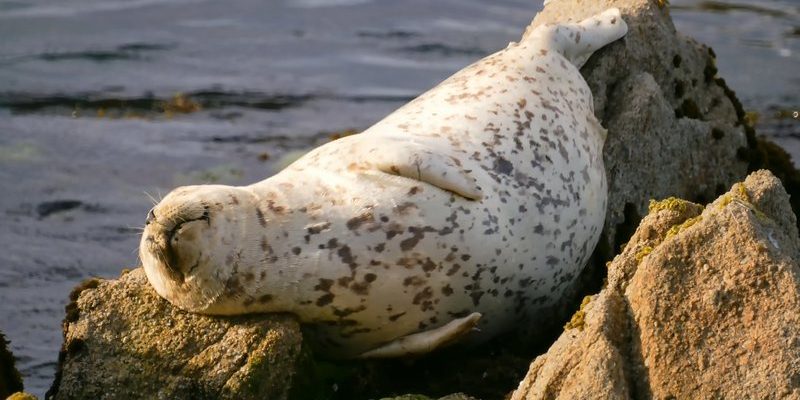
You might be wondering why these stories matter. They offer insights into how people have interacted with their environment and how animals like harbor seals have captured human imagination over the years. So, grab a cup of coffee and let’s unravel the stories and beliefs that have shaped our understanding of these playful pinnipeds!
The Role of Harbor Seals in Indigenous Cultures
In many Indigenous cultures, harbor seals hold a special place. For example, among the Coast Salish people of the Pacific Northwest, these seals are considered sacred animals. They are often associated with the spirit world and are believed to possess healing powers. This reverence is not just about their presence in the waters but also reflects a connection to the land and the cycles of life.
Harbor seals are often depicted in traditional artwork, storytelling, and oral histories. Their ability to thrive in both land and sea has made them symbols of resilience. In tales shared around fires, they might be portrayed as wise beings that guide humans through hardships. By acknowledging these cultural beliefs, we gain a deeper appreciation for both the animal and the people who hold it dear.
Another interesting aspect is the belief that harbor seals are guardians of the ocean. In some cultures, they are seen as protectors of fishermen, ensuring safe passage and plentiful catch. This belief encourages a respectful relationship between humans and the marine environment, reminding us of our responsibilities toward nature.
Harbor Seals and Modern Folklore
As time has passed, harbor seals have become part of modern folklore too. Many coastal communities have stories that revolve around these seals, sometimes painting them as mischievous creatures or playful spirits. For instance, there are tales of seals that can transform into beautiful humans, known as selkies. These enchanting stories capture the imagination, blurring the lines between reality and fantasy.
You might find it fascinating that these myths often serve as cautionary tales as well. They remind us to respect the sea and its inhabitants, showing how interconnected we all are. After all, the ocean isn’t just a resource; it’s a living entity with its own rhythms, stories, and lessons.
In some places, these stories have influenced local customs. People may hold festivals or create art that celebrates the seal’s role in their culture. This keeps the myth alive, ensuring that future generations can learn about the importance of harbor seals and their connection to their community.
Environmental Myths Surrounding Harbor Seals
Harbor seals are often at the center of various environmental conversations, leading to some interesting myths. One common belief is that these seals are responsible for declining fish populations. While it’s true that they eat fish, blaming them entirely is a simplification of a much larger issue. The reality is that overfishing, pollution, and habitat loss play significant roles too.
It’s essential to approach these topics thoughtfully. Harbor seals are part of the ecosystem, and their presence can even indicate the health of marine environments. So, rather than casting blame, we should focus on understanding how all elements of the ecosystem work together.
Another myth worth addressing is the idea that harbor seals are dangerous to swimmers. While harbor seals are generally shy and avoid humans, they can become curious. In some cases, people may misinterpret their behavior. Educating ourselves about these animals can help dispel fear and encourage respect. After all, understanding leads to appreciation, and that’s vital for conserving their habitats.
Harbor Seals in Art and Literature
The allure of harbor seals extends into the realm of art and literature. You’ll find them featured in various forms, from paintings to children’s books. Artists often portray seals as symbols of playfulness and freedom, making them relatable to people of all ages. This artistic representation helps bridge the gap between humans and nature.
One popular example is the portrayal of seals in children’s stories, where they often take on the role of friendly characters. These narratives can teach kids valuable lessons about the environment, empathy, and cooperation. By highlighting their wondrous characteristics, we foster a sense of awe and responsibility towards marine life.
Moreover, contemporary literature sometimes tackles themes of conservation, using harbor seals as mascots for ocean protection. These stories encourage readers to consider their impact on marine ecosystems. By embedding these ideas into popular culture, we push for awareness that can lead to positive change.
Scientific Perspectives and Misunderstandings
While myths and cultural beliefs are fascinating, it’s also vital to look at the scientific perspective. Harbor seals are remarkable creatures with complex behaviors and social structures. However, misconceptions abound regarding their breeding habits and social interactions. For instance, many people think that harbor seals are solitary animals, when in fact, they often haul out in groups during the breeding season.
Understanding their behaviors can help us appreciate them on a deeper level. For example, harbor seals communicate through a variety of vocalizations, which play a crucial role in mating and social interactions. Learning about these aspects helps bridge the gap between folklore and biology, allowing us to cherish their myths while respecting the science that describes their lives.
Additionally, observing harbor seals in their natural habitat can lead to eye-opening experiences. Many people are surprised to learn about their playfulness and curiosity, which contrasts with the often solitary image portrayed in folklore. This duality showcases the importance of both cultural beliefs and scientific understanding in shaping our views of the natural world.
The Future of Harbor Seals and Their Myths
As we face more environmental challenges, the stories and beliefs surrounding harbor seals are more crucial than ever. Preserving their habitats means continuing to share these myths. The cultural significance of harbor seals reminds us of the bond between nature and humanity.
There’s a growing movement among communities to include these narratives in conservation efforts. By tying habitat protection to cultural stories, people are more likely to engage and protect these animals. It’s a beautiful marriage of tradition and modern necessity, highlighting how ancient wisdom can guide us today.
Let’s not forget that every time we share tales of harbor seals, we keep their spirit alive. Each story we tell adds to the rich tapestry of beliefs that surround them. Whether through storytelling, art, or conservation efforts, we have the power to ensure that the myths of harbor seals thrive alongside them in the wild.
In conclusion, harbor seals are more than just marine animals; they are symbols of resilience, guardians of the sea, and subjects of captivating narratives. By understanding the myths and cultural beliefs surrounding them, we can foster respect for these playful pinnipeds and the oceans they inhabit. So the next time you see a harbor seal, remember the stories that shape their world, and consider how you too can contribute to a brighter future for them.

